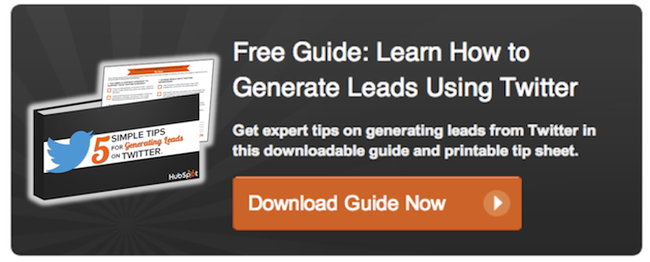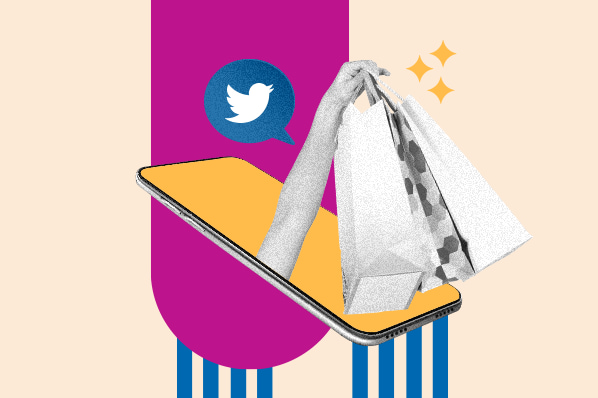 Do you remember the day Old Spice and Taco Bell started trash-talking to each other on Twitter? It was soooo funny. How about the time a follower joked that bird poop could easily destroy a Smart Car and Smart Car responded with this? The best moments on Twitter are always the unscripted ones and embody what the social platform is all about.
Do you remember the day Old Spice and Taco Bell started trash-talking to each other on Twitter? It was soooo funny. How about the time a follower joked that bird poop could easily destroy a Smart Car and Smart Car responded with this? The best moments on Twitter are always the unscripted ones and embody what the social platform is all about.
From eye-witness accounts of breaking news to genuine company-customer interactions, Twitter tears down the editorial filter and gives air to bursts of authenticity.
But you can't scale serendipity any more than you can manufacture it. So companies -- many of which are short on time but long on respect for the medium, which has brought them closer to their customers -- have taken to bulk scheduling social media content.
For busy marketers, the ability to schedule some social content at the beginning of the week has been a godsend. Scheduling tweets not only enables you to build a consistent presence on Twitter, but it also allows you to test timing and publish your messages when they are most likely to attract clicks and retweets.
The risk with bulk scheduling, however, is that your Twitter stream becomes robotic, predictable, and uninteresting -- a fate no inbound marketer wants. Here are a few ways to avoid Tweet monotony while still keeping some sanity in your schedule.
Use monitoring to catch opportunities for interaction.
The best approach is to pair scheduled tweets with a good monitoring strategy so you can catch opportunities for human interaction with your followers. You want to make sure you have a good balance of scheduled posts to interactions.
We use HubSpot to elevate tweets from your customers above the masses so you can respond to them in a more personal way. (Here's a guide for customers on how color-coding works in Social Inbox.) In the example below, I've set up email alerts for a tailored list of HubSpot customers who ask a question.

If you're not a HubSpot user, you can set up general keyword alerts in most monitoring tools to help you catch conversations that might be worth entering. Look for your company name and a question mark, as in the example above, to catch questions. Also, set up a monitoring stream by topic or geography, and figure out what mix of key terms works best for you.
Mix up your approach to crafting tweets.
Just because you're using software doesn't mean you have to act robotic. When compiling your tweets for the week, vary your writing approach. Even with the most interesting content "Statement: link ... Statement: link ... Statement: link" gets a little stale after awhile.
To help add some diversity to your scheduled content, schedule in questions, pictures, shout-outs, videos, and even jokes to mix things up. For example, ecommerce site Etsy does a nice job of this, as it frequently interweaves quotes, images, and other approaches into its stream.
Scheduling worksheets like this one will help you get a birds eye view of all of your upcoming tweets and a sense of how similar they are in nature. If you're seeing too many common structures, try reframing a few. Remember that any blogs you auto-tweet are going to be in headline-link format, so use your other tweets to stretch your creativity.
Repurpose your content, but avoid reusing tweets.
In one second on the internetthere are more than 6,000 tweets. In practical terms, that means no matter how brilliantly your 140 characters shine, at least part of your audience is going to blink and miss them entirely.
On Twitter, and in inbound marketing as a whole, resurfacing content is fundamental. However, you don't want your Twitter stream to turn into a stock exchange ticker repeating the same tweet again and again. Instead, plan to repost the link you want to share several times, but make sure you're sharing it with a different message each time.
In the example below, I've taken one post from our blog and planned to share it twice in the next few days using HubSpot's Social Media Publishing tool. For the second post, I've tweaked the message slightly, choosing to highlight a detail from the post instead of the title itself.
If you were going to share this out multiple times, you could shift the corresponding message in the following ways:
- Title: How to Bulk Schedule tweets without Sacrificing Authenticity
- Value Add: It's a good post on scaling authenticity on Twitter (we especially like tip 2).
- Quote: "Just because you're using software doesn't mean you have to act robotic."
- Takeaway: It's a useful worksheet for scheduling your tweets on this post.
- Stat: In one second on the internet, there are more than 6000 tweets. Here's how to craft tweets that don't get lost in the mix.
Be ready to push pause.
Every company is part of a larger community. On Twitter, that global community intersects. We collectively celebrate moments of joy. We share the impact of tragedy. When a crisis strikes your larger community, pushing pause on your scheduled tweets should be among your most immediate steps.
Before weighing a response, changing your website, and doing anything else, pause your scheduled posts. In crisis, Twitter transforms into a channel of mass organization and communication. It demands all of our attention, and disrupting it with marketing tweets is not only detrimental, but it can also lead to backlash.
Marketing magazine The Drum captured examples of poorly handled scheduled tweets in an April post. Among the ugly ones were a pre-scheduled post from American Rifleman (an NRA publication) that said, "Good morning shooters! Happy Friday. Weekend plans?" which went out in the aftermath of the Aurora, Colo., movie-theater shootings and this tweet from Live Nation that failed to recognize that the Radiohead concert it was tweeting had been canceled due to a stage collapse.
Pushing pause on your scheduled and promoted tweets also gives you the opportunity to clear your cache for a more meaningful response. For instance, during the citywide shutdown and corresponding manhunt for the Boston Marathon bombing suspects in April, the Boston Celtics cleared its regular tweet schedule and instead used its reach to help the Boston Police Department spread pertinent information through retweets.

This was a fitting response for the local sports team, which had a far larger local reach than the Boston Police (1.2 million vs. 200,000). Other companies appropriately tweeted a single heartfelt response and respectfully stepped away from the mic for the day so the Twitter feeds could be clear.
Small but deliberate principles like these can help move your Twitter strategy from a conventional marketing stream to a feed that attracts and holds a highly engaged following.
Take a look at some of the top brands on Twitter: Oreo, Dunkin Donuts, Innocent Drinks (wow, I must be hungry), Intel. Each of these companies is large enough that scheduling in advance is probably necessary, yet they manage to keep their feeds fresh and creative.
Let me leave you with a challenge: Take this planning spreadsheet and map out your Twitter shares for next week using some of the principles above. Repost links with different messages and make sure your approach is varied for each one. In addition, make a plan for how to respond personally to mentions of your company name on Twitter. And if you're currently scheduling your tweets, make sure you have a crisis response plan to cease any automated posts in an emergency.
You'll never be able to automate the unscripted moments that make Twitter such an enthralling channel, but you can certainly make a few standard changes to make your Twitter approach feel a bit more human.
Do you schedule your tweets days and weeks in advance using these or other best practices?




![Twitter is Dead (Kind of): Where X Stands With Consumers [New Data]](https://www.hubspot.com/hubfs/Untitled%20design%20%2832%29-1.jpg)

![11 Twitter Alternatives Marketers Can Consider [Data + Expert Insights]](https://www.hubspot.com/hubfs/Twitter%20Alternatives.jpg)





